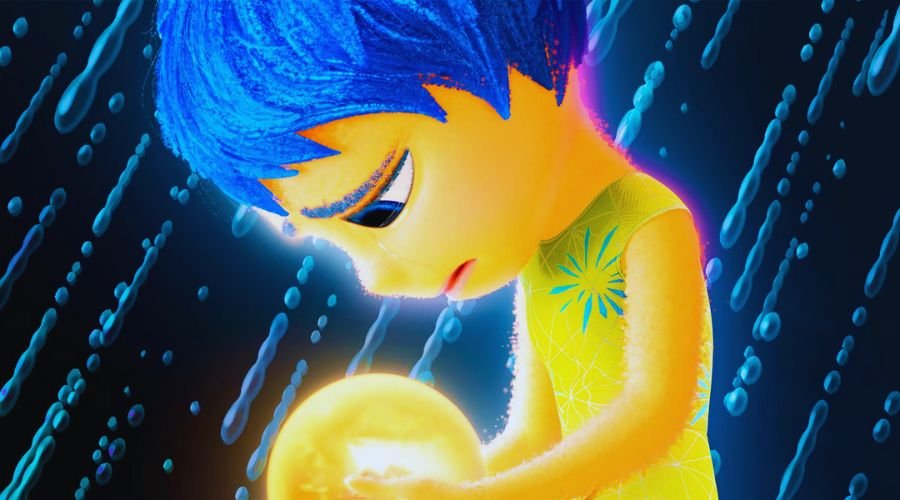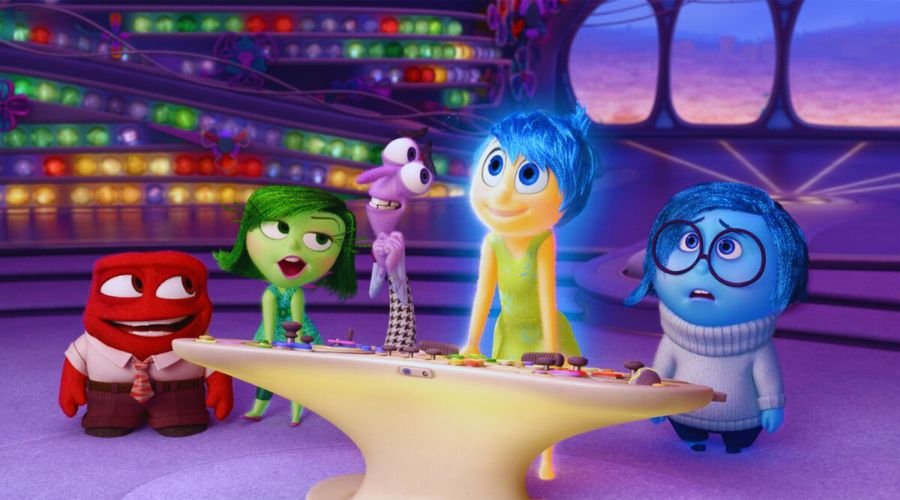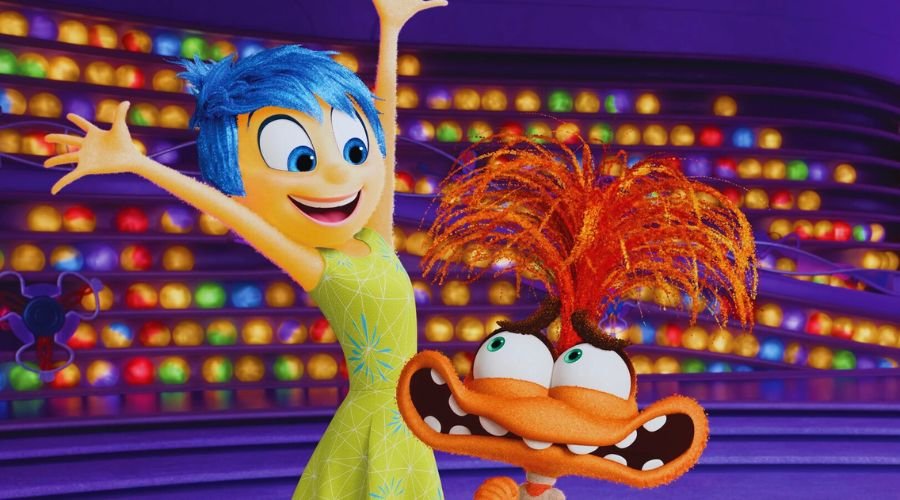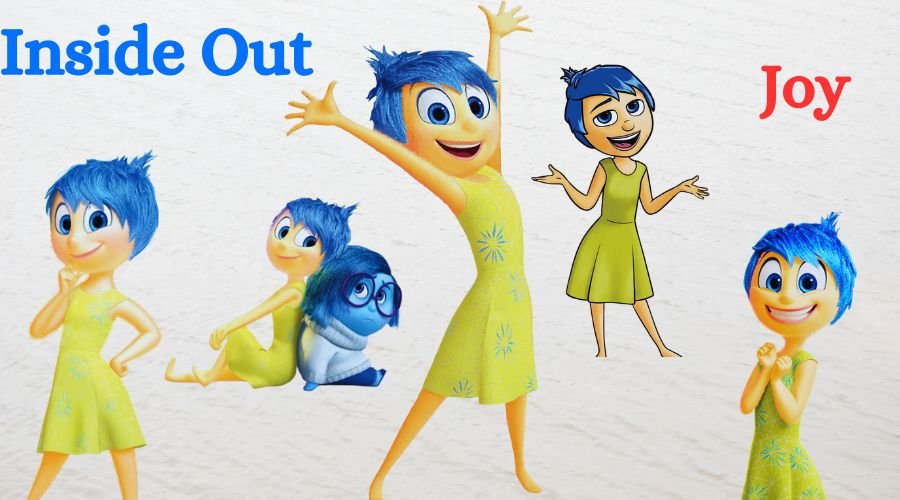The animated film Inside Out by Pixar introduced audiences to the emotions living inside the mind of an 11-year-old girl named Riley. Among these emotions, joy:hwv-ugma_iq= inside out stands out as the brightest and most optimistic. She plays a pivotal role in Riley’s mind, balancing the other emotions and striving to keep Riley happy and optimistic. But why does joy:hwv-ugma_iq= inside out have certain unique features, and what do her actions reveal about her character? This article delves into the symbolism, mysteries, and questions surrounding Joy in Inside Out, offering fans new insights into this memorable character.
Why Does Joy Cry in Inside Out?

Joy is known for her boundless energy, optimism, and laughter. However, a significant scene in Inside Out shows Joy shedding tears. This moment is pivotal for the character and the film as it illustrates a shift in Joy’s understanding of her purpose. Throughout the movie, Joy is determined to make Riley happy and sees Sadness as an obstacle. But in a moment of realization, Joy understands that sadness plays a vital role in Riley’s emotional well-being.
When Joy cries, it signifies her acceptance of the importance of Sadness. She recognizes that Sadness is necessary for empathy, emotional growth, and connection. It’s a transformative moment for Joy, showing that even the happiest characters need to embrace and accept sadness to achieve a balanced and fulfilled life.
Why is Joy’s Hair Blue?
Joy’s hair color is a striking contrast to her bright yellow glow. Her blue hair may seem like an unusual choice at first, but it’s a powerful symbolic feature. Pixar’s animators chose blue for Joy’s hair to represent the close relationship between Joy and Sadness. In the film, yellow represents Joy’s sunny and optimistic personality, while blue represents Sadness.
By giving Joy blue hair, Pixar subtly hints at the interconnectedness of these two emotions. The blue streaks in Joy’s otherwise yellow color palette visually foreshadow her journey to understand and accept Sadness. This color choice emphasizes the idea that joy and sadness are inseparable and that true happiness often includes an acceptance of all emotions.
Read Also: IP Address 34.217.198.225 / Adsterra Login
Is Joy Taller Than Fear?
Yes, in Inside Out, Joy is indeed taller than Fear. Each character’s appearance is carefully designed to represent their emotional role and personality. Joy’s height, upbeat demeanor, and upright posture signify confidence, positivity, and strength. Fear, on the other hand, is slightly shorter, hunched, and twitchy, embodying his cautious and nervous nature.
Joy’s taller stature can be seen as a metaphor for her dominant influence in Riley’s mind. She often takes the lead and makes decisions that drive Riley’s behavior. However, her height isn’t meant to make her seem more important; rather, it highlights her optimistic outlook and the level of influence she has within Riley’s mind.
What is Riley’s Dark Secret?

Riley’s “dark secret” is less of a literal secret and more a representation of complex, developing emotions. At the start of the film, Riley is a happy, carefree child, but as she grows up and experiences a move to a new city, she begins to grapple with deeper emotions. Her “secret” is the emotional turmoil and inner conflict she feels as she tries to adapt to her new life, leaving behind her friends, home, and memories.
This internal struggle becomes a hidden part of Riley’s identity as she tries to maintain a facade of happiness despite her sadness and confusion. The darker emotions that surface are a normal part of growing up, and the film masterfully illustrates this by showing her emotions attempting to balance her old identity with her new experiences.
Is Joy the Villain in Inside Out?
Joy is far from a traditional villain, but her actions can sometimes appear antagonistic. Her initial refusal to allow Sadness any control or influence over Riley’s mind can be seen as a flaw in her character. Joy’s resistance to Sadness leads to major complications, ultimately causing Riley’s emotions to become unbalanced.
However, Joy’s behavior isn’t rooted in malice; it stems from a misunderstanding of her role and a strong desire to keep Riley happy. Her arc in the film is about learning to work alongside Sadness, recognizing the importance of balance in one’s emotional life. Joy’s journey is about self-discovery rather than villainy, and she ultimately grows into a more well-rounded character by the end of the movie.
Is Ennui a Boy or Girl?
Restlessness, the character introduced in other media following Inside eschewal, represents tedium. Ennui is often depicted in a neutral manner, without clear gender characteristics, which is intentional. The character embodies an emotion that isn’t specifically tied to gender, allowing audiences to interpret Ennui as they choose. This neutral portrayal aligns with Pixar’s approach to emotions as universal, applicable to everyone regardless of gender.
Why is Boredom Represented as French?

The French association with boredom, or “ennui,” is a nod to cultural perceptions. In French, “ennui” directly translates to boredom or a feeling of dissatisfaction. The term “ennui” has been used in literature and art to describe a more profound sense of listlessness, often associated with an intellectual or artistic discontent.
By giving boredom a French influence, Pixar cleverly uses cultural references to shape the character’s personality. This association with French culture adds an extra layer of humor and sophistication, allowing audiences to recognize boredom in a relatable, though somewhat exaggerated, way.
Read Also: Wallpaper:s0n-zpp2wzk= Pink / Asthetic:rvr1_407miy= Cute Backgrounds | Cute Wallpaper
Is Bebe a Boy or a Girl?
The character of Bebe, a relatively minor figure within the Inside Out universe, has also been designed with gender neutrality in mind. Bebe represents a youthful innocence that isn’t defined by gender. Pixar often creates characters who embody universal qualities, focusing more on personality and emotion rather than defining them by gender. This inclusivity makes characters like Bebe more relatable to a diverse audience, resonating with viewers of all ages.
Why Is Anger Portrayed as a Short Character? Joy:hwv-ugma_iq= Inside Out
In Inside Out, the character of Anger is portrayed as short, compact, and intense, which serves an important role in defining his personality within Riley’s mind. This design choice by Pixar is particularly interesting when we consider it alongside the character Joy. joy:hwv-ugma_iq= inside out highlights the symbolic nature of each character’s physical design, helping to express the power and purpose of each emotion. Anger’s small, boxy frame reflects his explosive and concentrated energy, and by comparing his physicality to that of joy:hwv-ugma_iq= inside out, we see a contrast that is crucial to understanding their roles.
Symbolic Significance of Anger’s Short Stature in Joy:hwv-ugma_iq= Inside Out
- Compact Structure: Anger’s short, square build emphasizes his fiery and intense nature. Unlike the tall and upbeat character of Joy, joy:hwv-ugma_iq= inside out allows us to understand how each character’s appearance adds to their identity and function.
- Boxy Shape: The squared-off structure of Anger represents his rigidity and unyielding nature, contrasting with the more flowing, circular figure of Joy. joy:hwv-ugma_iq= inside out carefully uses these shapes to convey each emotion’s purpose, illustrating how the two characters complement and contrast each other.
- Fiery Red Color: Anger’s bright red color and his tendency to “flare up” visually remind audiences that he’s intense, passionate, and strong-willed. This complements Joy’s bright, sunny appearance in joy:hwv-ugma_iq= inside out, where colors are essential in helping viewers instantly identify the emotions.
In joy:hwv-ugma_iq= inside out, Anger may appear impulsive and volatile, but he serves an essential purpose: he protects Riley’s sense of justice. Anger’s role reminds us that each emotion, even the more intense ones, has a purpose. The clever design of characters like Anger and Joy in joy:hwv-ugma_iq= inside out shows how even small, powerful emotions can significantly impact Riley’s actions and decisions.
What Role Does Sadness Play in Inside Out? Joy:hwv-ugma_iq= Inside Out
In Inside Out, Sadness is one of the most intriguing characters, especially when viewed in contrast to joy:hwv-ugma_iq= inside out. Originally, Joy dismisses Sadness, perceiving her as a interference to Riley’s happiness. However, as joy:hwv-ugma_iq= inside out progresses, it becomes clear that Sadness plays a critical role in Riley’s emotional well-being, demonstrating the film’s theme of embracing all emotions.
How Sadness Contributes to Joy:hwv-ugma_iq= Inside Out
- Facilitating Empathy: Sadness allows Riley to connect with others on a deeper level. By experiencing sadness, Riley develops empathy and understanding, which are crucial for building relationships. In joy:hwv-ugma_iq= inside out, Sadness’s influence shows that empathy is essential for emotional growth.
- Emotional Processing and Healing: Sadness encourages Riley to process her feelings, allowing her to experience and express complex emotions. This is a key message in joy:hwv-ugma_iq= inside out, where we see that emotional growth often requires sitting with difficult feelings.
- Connecting Joy and Sadness: A central theme of joy:hwv-ugma_iq= inside out is that joy and sadness are interconnected. True happiness often includes experiencing moments of sadness, and this balance is essential for Riley’s well-being.
Through joy:hwv-ugma_iq= inside out, Pixar conveys that emotions like Sadness are necessary for personal development. By accepting Sadness, Joy helps Riley become a more balanced and resilient individual. This realization is what makes joy:hwv-ugma_iq= inside out resonate with audiences, as it reminds us that all emotions have value.
Why Did Pixar Choose to Make Joy the Protagonist? Joy:hwv-ugma_iq= Inside Out

The decision to make Joy the protagonist in Inside Out is a deliberate choice that aligns with the core themes of joy:hwv-ugma_iq= inside out. Joy represents Riley’s initial approach to life, focusing on happiness, positivity, and optimism. By making her the central character, Pixar enables viewers to explore the journey of realizing that joy alone is not enough for a fulfilling life.
Reasons for Making Joy the Lead Character in Joy:hwv-ugma_iq= Inside Out
- Reflecting Childhood Innocence: Young children often experience joy as the primary emotion, which makes Joy an ideal protagonist for the start of Riley’s journey in joy:hwv-ugma_iq= inside out. As Riley grows, so too does Joy’s understanding of other emotions.
- Joy’s Transformation: Joy’s relationship with Sadness becomes a central theme, showcasing the importance of emotional diversity. In joy:hwv-ugma_iq= inside out, this evolution helps audiences recognize the value of emotions they may otherwise ignore or dismiss.
- Teaching Acceptance of All Emotions: Joy’s initial insistence on controlling Riley’s emotions shows the pitfalls of a “happiness-only” mindset. joy:hwv-ugma_iq= inside out uses Joy’s journey to illustrate that true happiness requires accepting the entire spectrum of emotions.
Through joy:hwv-ugma_iq= inside out, Pixar creates a story where Joy learns that accepting emotions like sadness, fear, and anger enriches life experiences. Joy’s role as the protagonist is a reminder of how all emotions contribute to growth, resilience, and emotional health, making joy:hwv-ugma_iq= inside out a powerful exploration of human psychology.
Read Also: Shopsy Seller Login Demystified: Everything You Need to Know
Conclusion
Inside Out uses joy:hwv-ugma_iq= inside out to explore the vital role of emotions. Joy’s journey from relentless optimism to understanding Sadness highlights that true emotional health involves balance. The symbolic details, like Joy’s blue hair, reinforce the theme that joy:hwv-ugma_iq= inside out reflects—happiness and sadness are interconnected. Through joy:hwv-ugma_iq= inside out Pixar shows that embracing all emotions is key to resilience and genuine happiness.
FAQs
1. Why does Joy cry in Inside Out?
A. Joy cries in the movie when she realizes the significance of Sadness in Riley’s life. It’s a moment of growth for Joy, helping her understand that a healthy emotional balance includes all feelings.
2. Why is Joy’s hair blue?
A. Joy’s blue hair symbolizes the connection between joy and sadness, hinting at her eventual acceptance of Sadness as a necessary part of Riley’s emotional journey.
3. Is Joy taller than Fear?
A. Yes, Joy is designed to be taller than Fear to reflect her confident, upbeat personality, whereas Fear’s shorter stature represents his cautious, timid nature.
4. What is Riley’s “dark secret”?
A. Riley’s “dark secret” is her hidden emotional struggle as she tries to adapt to her new life after moving to a different city, balancing her feelings of sadness, anxiety, and nostalgia.
5. Is Joy considered a villain in Inside Out?
A. No, Joy is not a villain. Her actions sometimes appear controlling, but they stem from a desire to protect Riley’s happiness. Her journey in the film is about learning to embrace all emotions, including Sadness.
